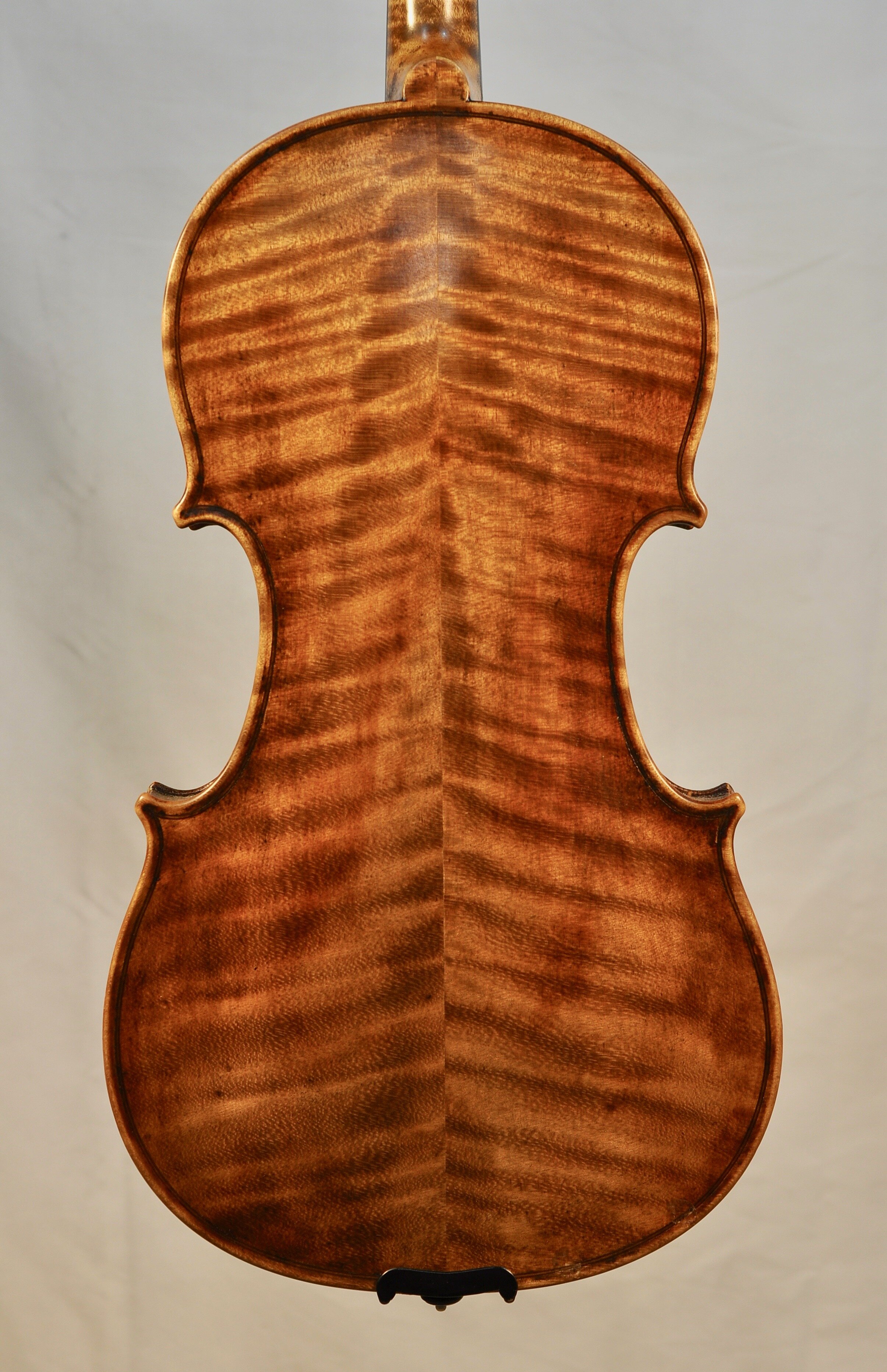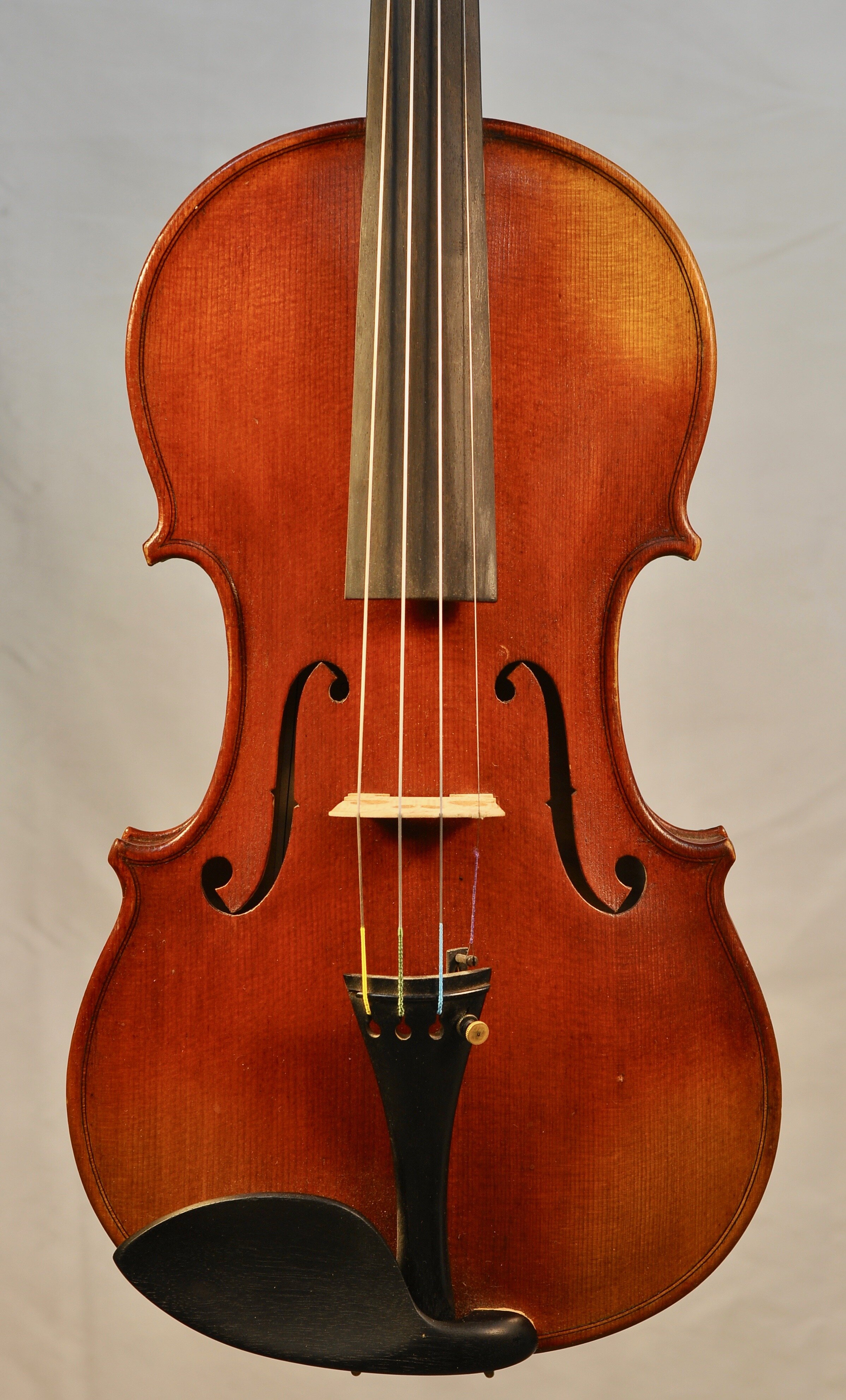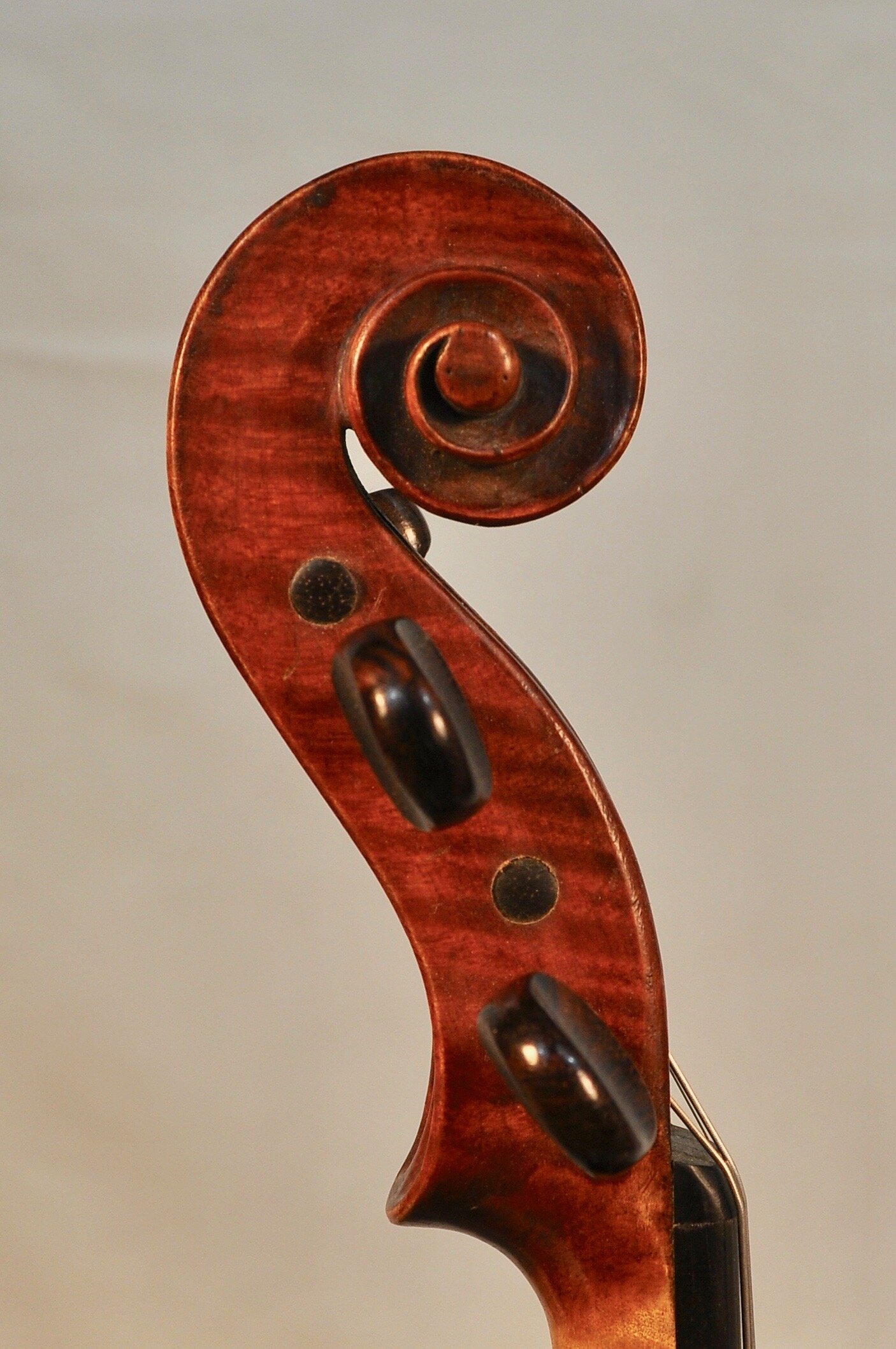The Carletti family was one of the most prolific and influential families in Italian violin making in the 20th century, and is still active through Gabriele. The Patriarch of the family was Carlo, born 1873 in Pieve di Cento near Bologna and Ferrara. Carlo trained his 3 sons, Natale, Orfeo, and Nulli, as well as his nephew Genuzio.
The best work of Carlo is rare, and generally doesn’t bear his label. They are as appealing as any modern Italian,made and varnished in a manner that recalls instruments 100 years earlier. The bulk of his work is a bit simpler. He helped the guitar maker Luigi Mozzani set up a workshop in Cento, where he likely trained other makers like Claudio Gamberini. Without an original label it is very difficult to distinguish between the work Carlo Carletti, Gamberini, and some Mozzanis.
Natale also made huge contributions to the violin world, maybe especially in his cellos. The example here is labeled Carlo, and probably is from 1950-60. It has a two piece slab sawn maple back, as does the Genuzio Carletti cello here. Another thing they share is that the tops have wings, as does the Carlo cello top . The Carletti family as a whole showed a preference for softer wood in the back, usually poplar but also slab sawn maple.
Genuzio’s work is perhaps more likely to win a violin making competition than his relatives, even if it lacks the personality of the best work of his cousins and uncle. After World War II he worked with Joseph Settin of New York, who imported much of his work to the U.S. These instruments often are labeled Carsettinius, combining the two names, and many are assumed to have been varnished by Settin


























